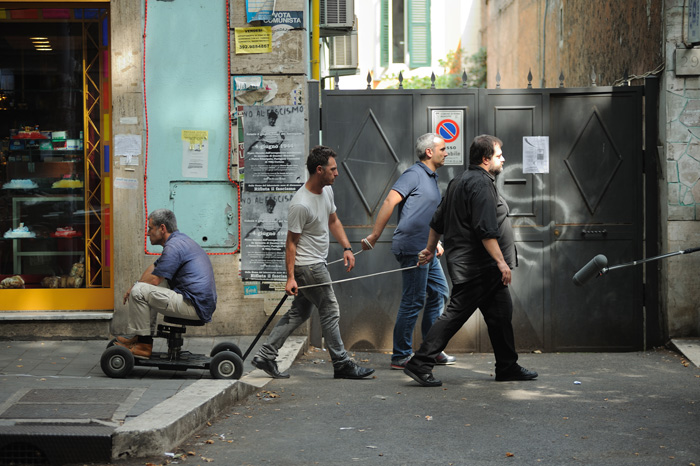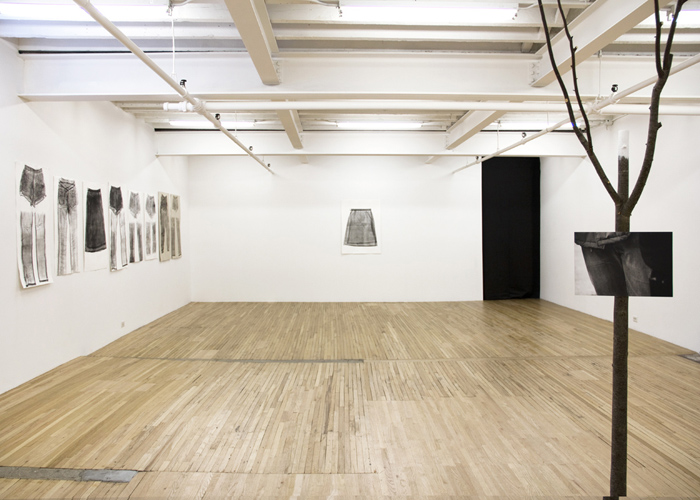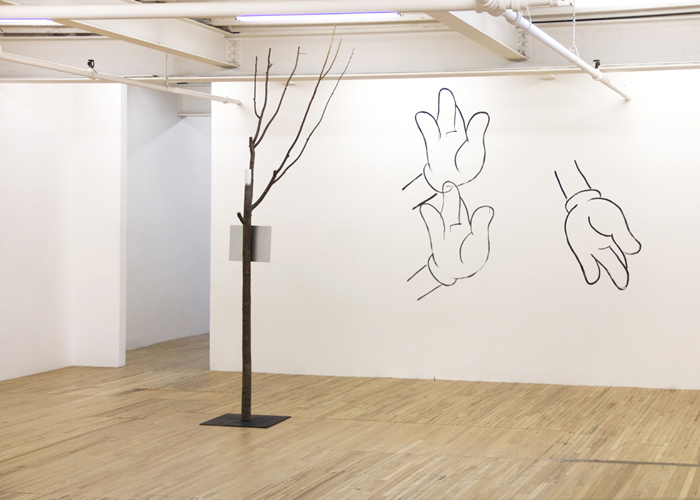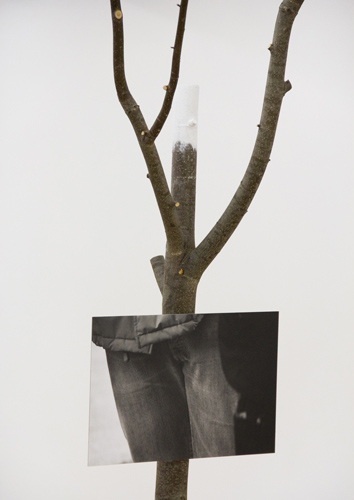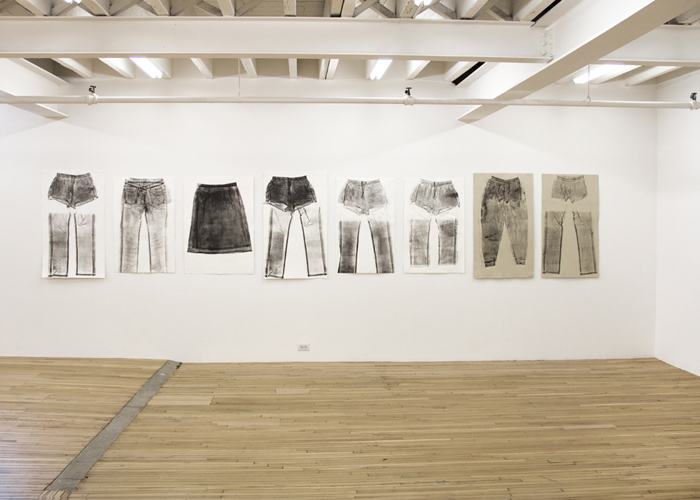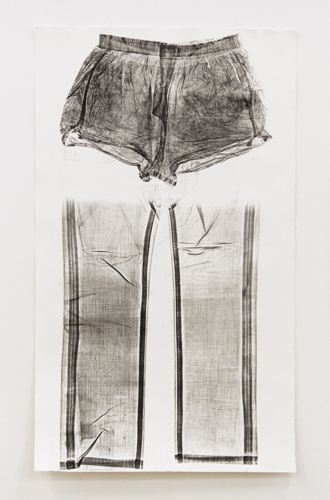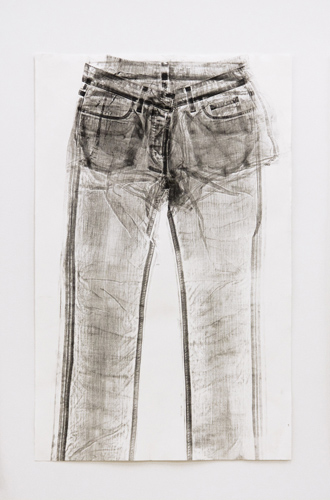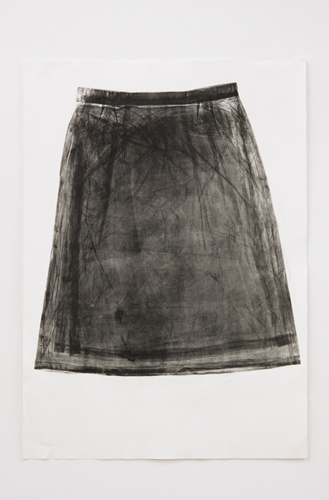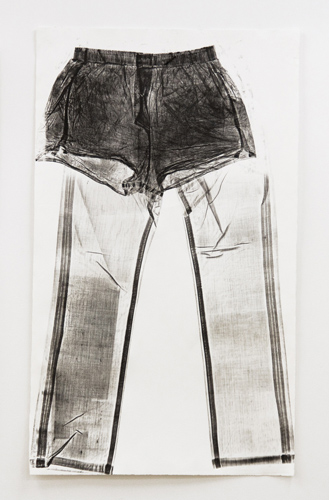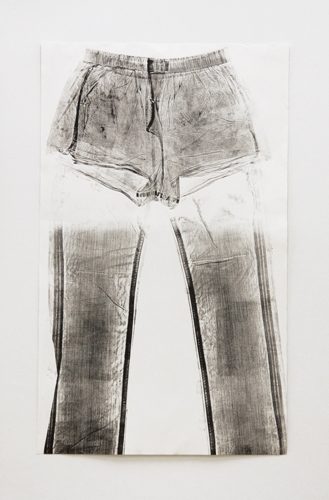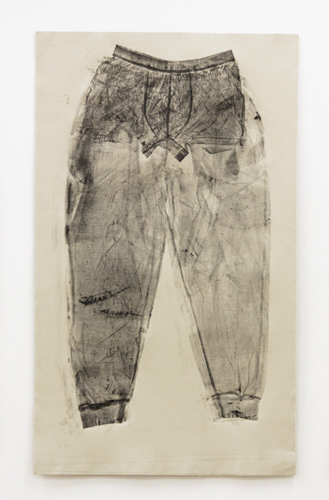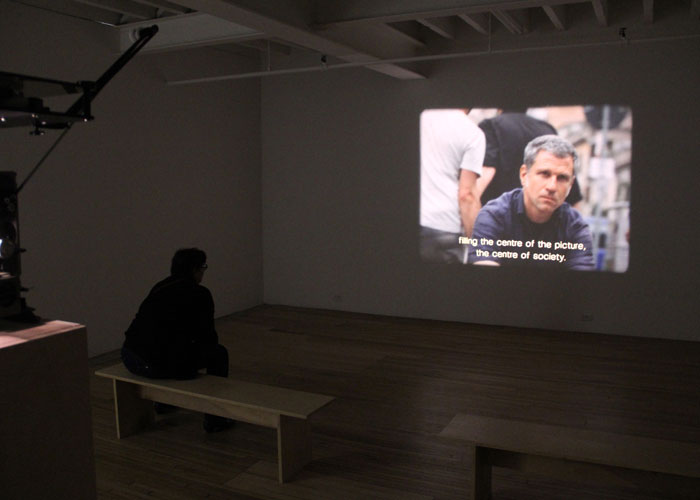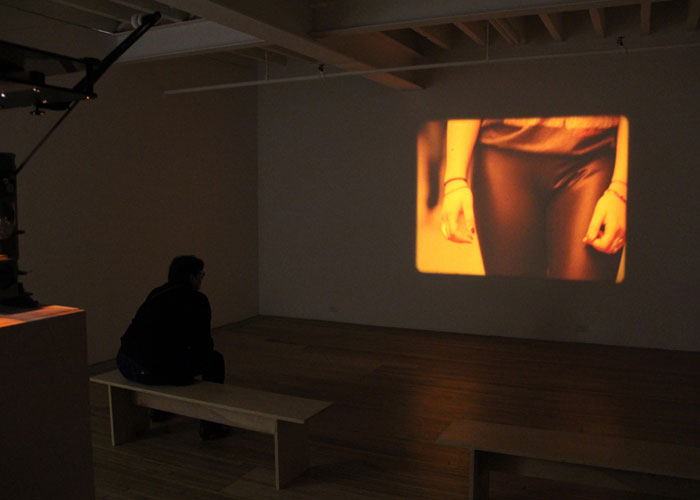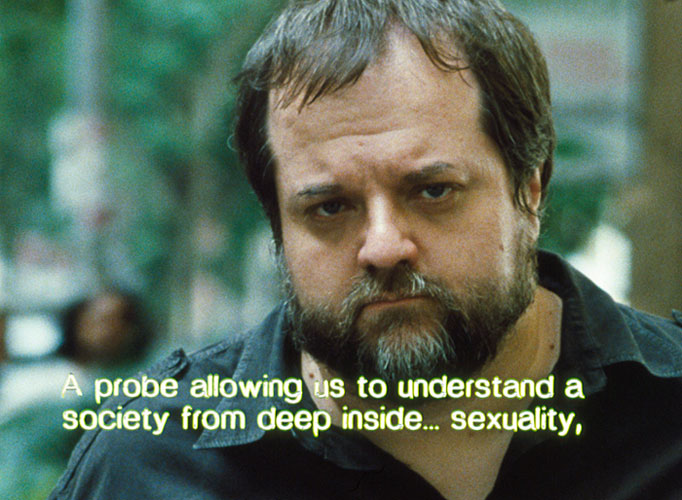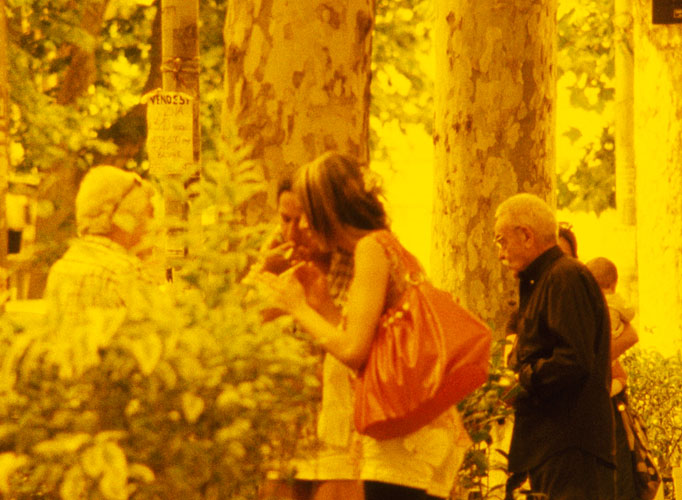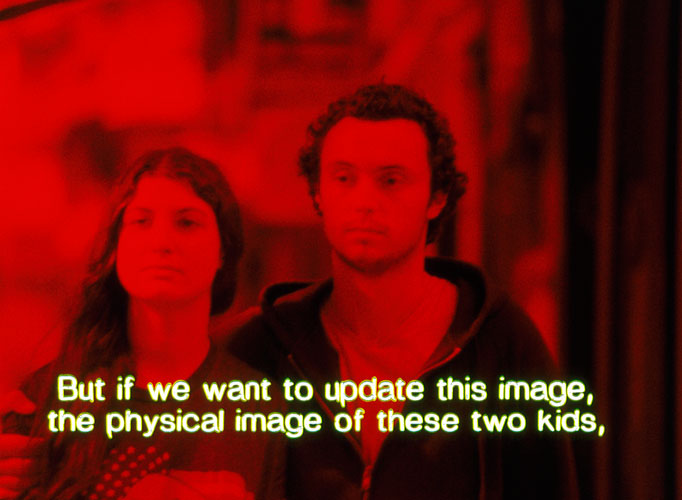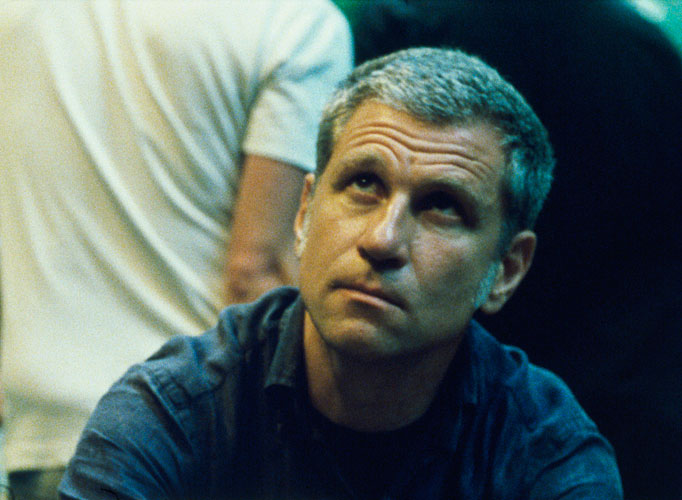ROSALIND NASHASHIBI: Carlo's Vision
Opening: Saturday, 21 September, 6-8pm
Murray Guy is pleased to present the gallery’s first solo exhibition with Rosalind Nashashibi.
Rosalind Nashashibi works with film, sculpture, print and photography. Her films combine close observation of everyday life with dramatically constructed scenes, in order to reveal the friction that occurs between the real and the fantastical or mythological. Her works often explore issues of control, internalized in citizens or exerted by the state.
There is a young man, The Shit, and his fiancée, whose name, it seems, is Cinzia. At the start of the Vision
these two young people are passing the traffic lights at the intersections of Via Casilina and Via di Torpignattara.
Carlo, the one who is watching, observes them coming toward him: in fact, he is in the middle of Via di
Torpignattara, on a cart with cork wheels, exactly like a director on a dolly. There is a long, slow backward
tracking shot. Pulling the cart . . . are three Gods, whom Carlo, however, sitting on the tailgate, with his back
to the shaft, cannot see.
— Pier Paolo Pasolini, Petrolio.
So reads a passage from Pasolini’s sprawling, epic novel, Petrolio, first published in unfinished form seventeen years after his murder in 1975. Inspired by the film treatment style of this section of the novel, Nashashibi has taken the protagonists, the props and the location, transported them into the present day and used them as the departure point for her 16mm film, Carlo’s Vision. The result is a mixture of observational documentary and fiction, in which Carlo, contemplates the long march of a young man and his fiancée, while being towed backwards by three gods, two speaking and one silent. Although he has his back to them he can hear what they are thinking, as two distinct interior monologues. The two prophetic figures provide an interpretation of what Carlo is witnessing, commenting on the past and present governance of Rome, and focusing on class and sexuality as manipulated today by Italy’s power structures.
Carlo’s Vision was shot in the summer of 2011 in Tor Pignattara, a working class suburb of Rome, beloved by Pasolini and the location of his 1961 film Accattone, as well as numerous other post-war Italian movies. The shift between reality and the vision is marked by the use of color. When looking through Carlo’s eyes, we see fragments of bodies, hairstyles, clothing, and sexual parts, which are first suffused in a bright red light, turning to orange, yellow and finally vivid green as he proceeds along the blocks of the street. When the point of view goes back to the procession and the reactions to it from the outside, we return to natural colors with a more steady and objective gaze. Through these techniques, simultaneous layers of reality are described. The almost mythological procession is dropped into a very ordinary day in the neighborhood, whose population – today also comprising immigrant Bangladeshis, Ethiopians, and Eastern Europeans – observes, participates and claims its existence out loud.
The gods were selected as genii loci, cultural commentators who could bring some authority to their proclamations on the people and culture of the suburbs, the city and the country. Portraying the gods are Andrea Cortelessa, a literary critic and literature historian and Daniele Balicco, a critic, a journalist and a scholar of mass media. The interior monologues of the gods are the edited result of a conversation about Balicco’s and Cortellessa’s experiences on the street and thoughts arising from the procession. Nashashibi has selected extracts of this dialogue to create a dialectic of isolated voices: one god is focused on matters of governance and state conspiracy, while the other muses on the uses of sexuality in today’s political and popular life.
Also in the exhibition, A New Youth includes a tree displaying a photograph of a denim-clad crotch, and a large cartoon illustration of Mickey Mouse’s hands in a familiar Buddha gesture. With one hand pointing up and the other down, the gesture seems to accept more than one path, or in fact more than two, as the reduction of the human condition to simple dichotomies is in question when the tree itself seems to be wearing its ambiguous sex in mid-metamorphosis. This work echoes an earlier installation made by Nashashibi during the revolutionary uprising in Cairo reflecting on the role of male youth in a post ‘Arab Spring’ world. The installation encourages a discussion on masculinity, icon and sexuality, exploring the limitlessness of looking and identification.
A series of prints, The Joins, locates masculinity in a particularly literal place. These unique prints on paper, were made by putting men’s jeans and underwear through a printing press, leaving the paper inked and in places worn through with the stamp of every stitch and crease of the fabric. Often the jeans rise up from the ankles as far as the thighs and then stop, to reveal a white expanse at the top of the leg, and the underwear is exposed. These prints invoke the crude and absurd nature of bodies and things, through their exaggerated crotches, their intimacy with the body and their trace of the real object; and in this last aspect they bear a resemblance to film and photographic processes.
Rosalind Nashashibi, born 1973 in Croydon, UK, studied at Glasgow School of Art. She has had numerous solo shows including those at Tate Britain; Chisenhale Gallery, London; Presentation House Gallery, Vancouver; ICA London; Bergen Kunsthall; Berkeley Art Museum. She represented Scotland at the 52nd Venice Biennale, and has participated in Manifesta 7, Sharjah 10 and the 5th Berlin Biennial with Lucy Skaer in their collaboration as Nashashibi/Skaer. She will present a solo show at Objectif Exhibitions in Antwerp this year and an Imperial War Museum commission on Gaza in 2015. She lives and works in Liverpool.
Carlo’s Vision was commissioned by the Nomas Foundation, Rome, and Peep-Hole, Milan, where it was first shown in 2011.
For more information or images, please contact the gallery at info@murrayguy.com or +1-212-463-7372.
